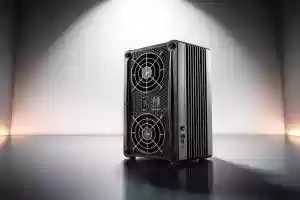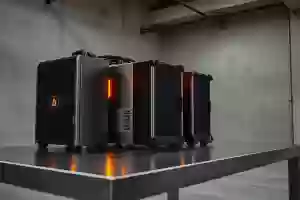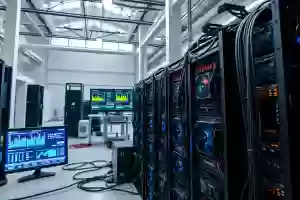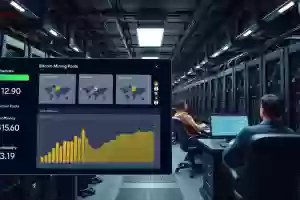Solo Mining Bitcoin on NerdMiner: What Are the Chances of Finding a Block?
 23 Feb 25
23 Feb 25
When we dive into the world of cryptocurrency, a big question pops up. What are the odds of finding a block when solo mining Bitcoin on NerdMiner? NerdMiner has a hashrate of 80–130 GH/s and uses 7–8W of power. It's a power-saving choice for solo mining, but how does it compare to others?
And what are the real chances of finding a Bitcoin block?
Getting into solo mining on NerdMiner means understanding the odds. The Bitcoin block reward is now 3.125 BTC, which is a big deal. But solo mining's chances are almost zero because of the low hashing power compared to big mining farms.
We'll look into the math behind finding Bitcoin blocks and what it means for NerdMiner solo mining.
Understanding Solo Mining Fundamentals
Getting into Bitcoin mining starts with solo mining basics. Solo mining means using one device to solve complex math problems to find a block. Pool mining, on the other hand, combines efforts with other miners to boost finding chances. Knowing how to solo mine Bitcoin involves understanding its pros and cons.
Solo mining gives you full control but finding a block is harder. Pool mining increases finding chances but rewards are split. Solo mining setup guides help make smart choices.
https://www.youtube.com/watch?v=2EfdkG_9BIA
Choosing between solo and pool mining depends on resources and equipment. Solo mining often uses a single device, like the NerdMiner, for learning. The NerdMiner's low power and hashrate make it perfect for beginners. By grasping solo mining basics and using solo mining setup guides, you can decide the best mining path.
The Mathematics Behind Bitcoin Block Discovery
The process of finding a Bitcoin block is based on math. It depends on the solo mining probability. This probability changes based on the device's hash rate and the network's difficulty level.
The hash rate is how many calculations a device can do in a second. The difficulty level shows how hard it is to find a new block. Together, they affect how likely it is to find a block.
Finding a Bitcoin block is like solving a complex puzzle. It needs a lot of computing power. The device with the highest hash rate has the best chance of solving it first.
But, the network's difficulty level changes every 2016 blocks. This keeps the time between blocks around 10 minutes.

For those into solo mining, understanding the math is key. Knowing what affects the solo mining probability helps them make better choices. They can improve their chances of finding a new block.
In the next section, we'll look at NerdMiner's hardware. We'll see how it affects solo mining probability.
NerdMiner Hardware Specifications and Capabilities
The NerdMiner is a solo mining hardware device made for learning and hobbyists. It's great for those who want to learn about Bitcoin mining without spending a lot. It has a hash rate of 80–130 GH/s and uses only 7–8W of power.
This makes the NerdMiner perfect for those into solo mining hardware. It's also very good at saving energy. It uses less power than many LED bulbs in homes.
This is great for those who want to save on energy costs. The NerdMiner is also a great tool for learning about Bitcoin mining. It's affordable and hands-on, making it perfect for beginners.
https://www.youtube.com/watch?v=Ksb1d8jgjL8
The NerdMiner is much faster than its predecessors. It has a high hash rate and low power use. This makes it ideal for solo mining hardware and energy-efficient mining.
Here's a quick look at the NerdMiner's specs:
| Specification | Value |
|---|---|
| Hash Rate | 80–130 GH/s |
| Power Consumption | 7–8W |
| Energy Efficiency | Consumes less power than many household LED bulbs |
Calculating Solo Mining Probability on NerdMiner
To figure out solo mining probability on NerdMiner, knowing how hash rate affects block discovery is key. The hash rate is how many calculations a miner can do in a second. A higher hash rate means better chances of finding a block, which changes the solo mining probability.
The time-to-block calculations also matter a lot. They help figure out when a block might be found. By understanding these, miners can guess their success chances.
The hash rate impact on finding blocks is big. It shows how fast a miner can do the needed calculations. The time-to-block calculations look at hash rate, network difficulty, and more. They estimate when a block will be found. Using math and the device's hash rate, miners can guess their solo mining probability. This helps them make smart choices for their mining.
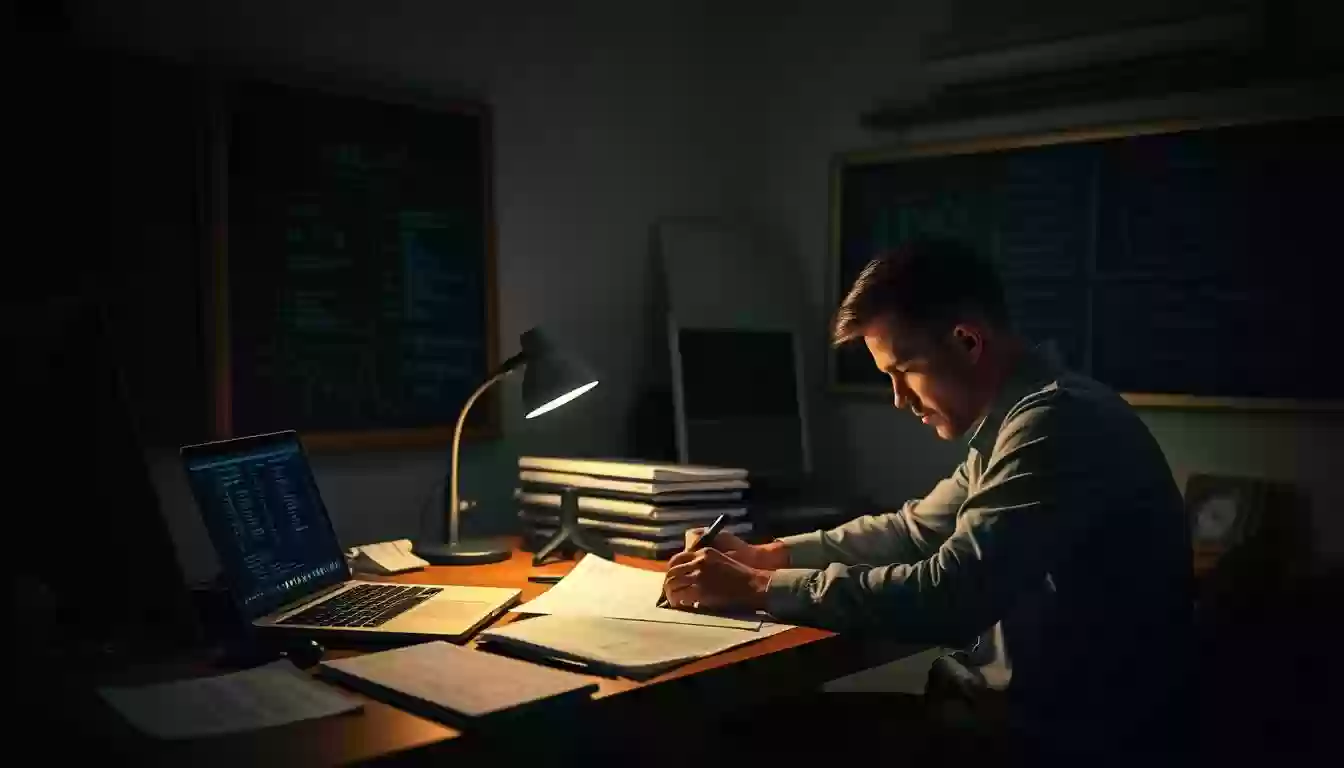
For instance, a miner with a Bitaxe device, up to 400 GH/s hash rate, can guess their solo mining chance. They look at the device's specs and current network conditions. Knowing the hash rate impact and time-to-block calculations helps miners improve their mining. This way, they can boost their success rates.
Real-World Success Rates and Statistics
Solo mining success rates are usually low. But NerdMiner statistics show NerdMiner's compact design and energy efficiency are great for hobbyists. Recent data shows success rates depend on hashrate, energy use, and network connection.
Hashrate is a key factor in solo mining success. For example, the Bitaxe series has hashrates from 400 GH/s to 1.2 TH/s. Here's a table showing hashrates of different Bitaxe models:
| Model | Hashrate |
|---|---|
| Bitaxe Max (100 Series) | up to 400 GH/s |
| Bitaxe Ultra (200 Series) | up to 500 GH/s |
| Bitaxe Supra (400 Series) | up to 625 GH/s |
| Bitaxe Gamma (600 Series) | 1.0 TH/s to 1.2 TH/s |
Understanding factors like hashrate and NerdMiner statistics helps miners make better choices. This way, they can improve their chances of success in solo mining.
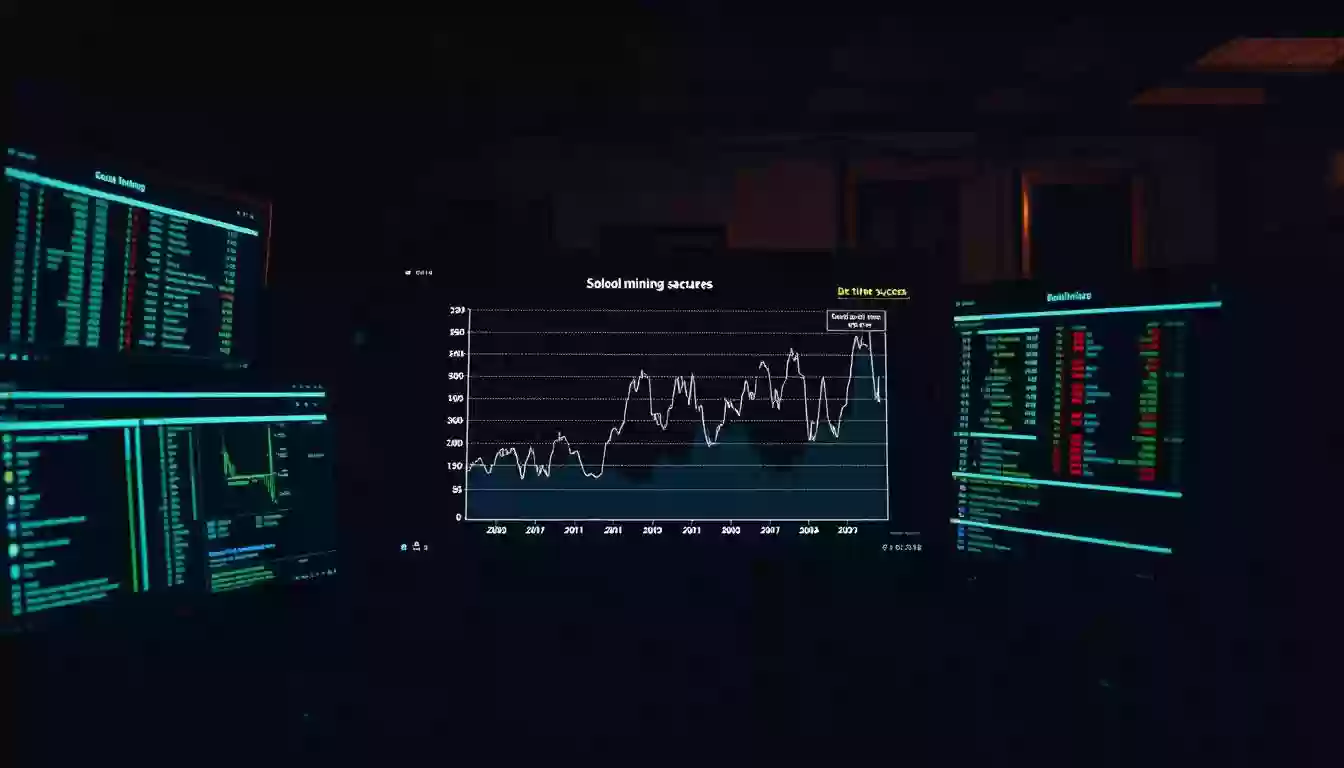
Maximizing Your Solo Mining Potencial
To boost your solo mining, focus on solo mining optimization. This means tweaking settings and making sure your network connectivity is solid. Doing this can help you mine better and find blocks more often. For more tips, check out this guide on solo mining with Antminer on CKPool.
Keeping up with maintenance best practices is key to avoid downtime. Watch your equipment's temperature, update software, and do regular checks. These steps help keep your mining smooth and prevent failures. By following these tips and staying current with solo mining, you can reach your full mining capacity.
Economic Considerations of Solo Mining
Understanding the economics of solo mining is key to making smart choices. Solo mining economics looks at the costs and possible earnings of mining alone. It includes the expenses of hardware, energy, and upkeep, plus the chance of finding a block.
A detailed cost analysis is vital to see if solo mining works. It covers the initial costs of buying and setting up hardware, plus ongoing energy and maintenance costs. Knowing these costs helps miners figure out their possible earnings and plan their mining.
Also, break-even calculations are important to find out when costs are covered by rewards. This means figuring out how many blocks need to be found to pay for mining, and how long it takes. These numbers help miners set realistic goals and make better choices for their mining.

In the end, knowing the economic side of solo mining is key to success. By carefully looking at costs and possible earnings, miners can make better choices. This leads to greater success in the world of cryptocurrency mining.
Common Challenges in Solo Mining Bitcoin
Solo mining Bitcoin can be rewarding, but it has its challenges. One big solo mining challenge is the low success rate. Finding a block is very hard, making it tough to earn a steady income.
Another challenge is the high energy needed for solo mining. Some miners, like NerdNos, use only 7-8W. But others use much more, leading to high costs and Bitcoin mining difficulties. Also, solo mining can't grow much, making it hard to compete with big mining operations.
Despite these hurdles, many miners keep solo mining. They do this because of the chance for big rewards. By knowing the solo mining challenges and Bitcoin mining difficulties, miners can prepare better. They can make smart choices for their mining.
Alternative Approaches to Consider
Exploring solo mining, it's key to look at alternative mining approaches. These can lower risks and boost rewards. Hybrid mining is one such method. It mixes solo mining's perks with pool mining's strength. This way, miners can face fewer risks while playing the Bitcoin lottery.
Another important part is risk mitigation. This means finding ways to lessen losses and grow gains. By spreading out their mining and using risk mitigation tactics, miners can tackle solo mining's hurdles better. This boosts their success chances.
In summary, alternative mining approaches like hybrid mining and risk mitigation can make solo mining better. By trying these methods, miners can cut down risks, increase rewards, and enhance their mining journey.
Conclusion
Exploring solo mining Bitcoin on NerdMiner shows it's a great chance for those into cryptocurrency. The odds of finding a block might seem high, but the excitement is real. For those who are up for the challenge, the chance to win a Bitcoin is very tempting.
This article has shown how key it is to grasp the math behind finding blocks. It's also important to know what your hardware can do and to figure out your chances of winning. With help from D-Central Technologies, solo miners can improve their game and help the Bitcoin network grow.
The solo mining journey on NerdMiner is more than just making money. It's about feeling powerful and being part of the Bitcoin community. As more people start mining, sharing knowledge and building a supportive community becomes even more important.
If you're into cryptocurrency or just starting with Bitcoin mining, NerdMiner is worth checking out. Start your solo mining adventure today. Connect with D-Central Technologies and see where it takes you. The excitement and the chance to win are waiting for you.
FAQ
What is solo mining Bitcoin on NerdMiner?
Solo mining on NerdMiner means trying to find new Bitcoin blocks alone. It's different from joining a mining pool.
How does NerdMiner fit into the solo mining ecosystem?
NerdMiner is made for solo Bitcoin mining. It has high hash rates and uses less energy.
What are the key differences between solo and pool mining?
Solo mining might give you bigger rewards but is riskier. Pool mining offers smaller rewards more often.
How does the mathematics behind Bitcoin block discovery affect solo mining?
Finding a block depends on your hash rate and the network's difficulty. Knowing these helps guess your chances of success.
What are the key hardware specifications and capabilities of NerdMiner that impact solo mining?
NerdMiner's power, hash rate, and energy use are key. They affect how well it mines solo.
How can I calculate the probability of solo mining success on NerdMiner?
Use your hash rate, the network's difficulty, and how long it takes to find a block. These help guess your solo mining success.
What are the real-world success rates and statistics for solo mining with NerdMiner?
Look at NerdMiner users who found blocks. Their stories show the ups and downs of solo mining.
How can I maximize my solo mining with NerdMiner?
Adjust settings, keep your network stable, and maintain your device. These steps can boost your solo mining success.
What are the economic considerations of solo mining with NerdMiner?
Think about costs, possible earnings, and when you might break even. These are key to solo mining's financial side.
What are the common challenges faced in solo mining Bitcoin with NerdMiner?
Solo mining with NerdMiner faces challenges like low success rates and high energy use. It also has limited growth.
What are the alternative approaches to solo mining with NerdMiner?
Consider hybrid mining or strategies to reduce risk. Each has its own pros and cons.







